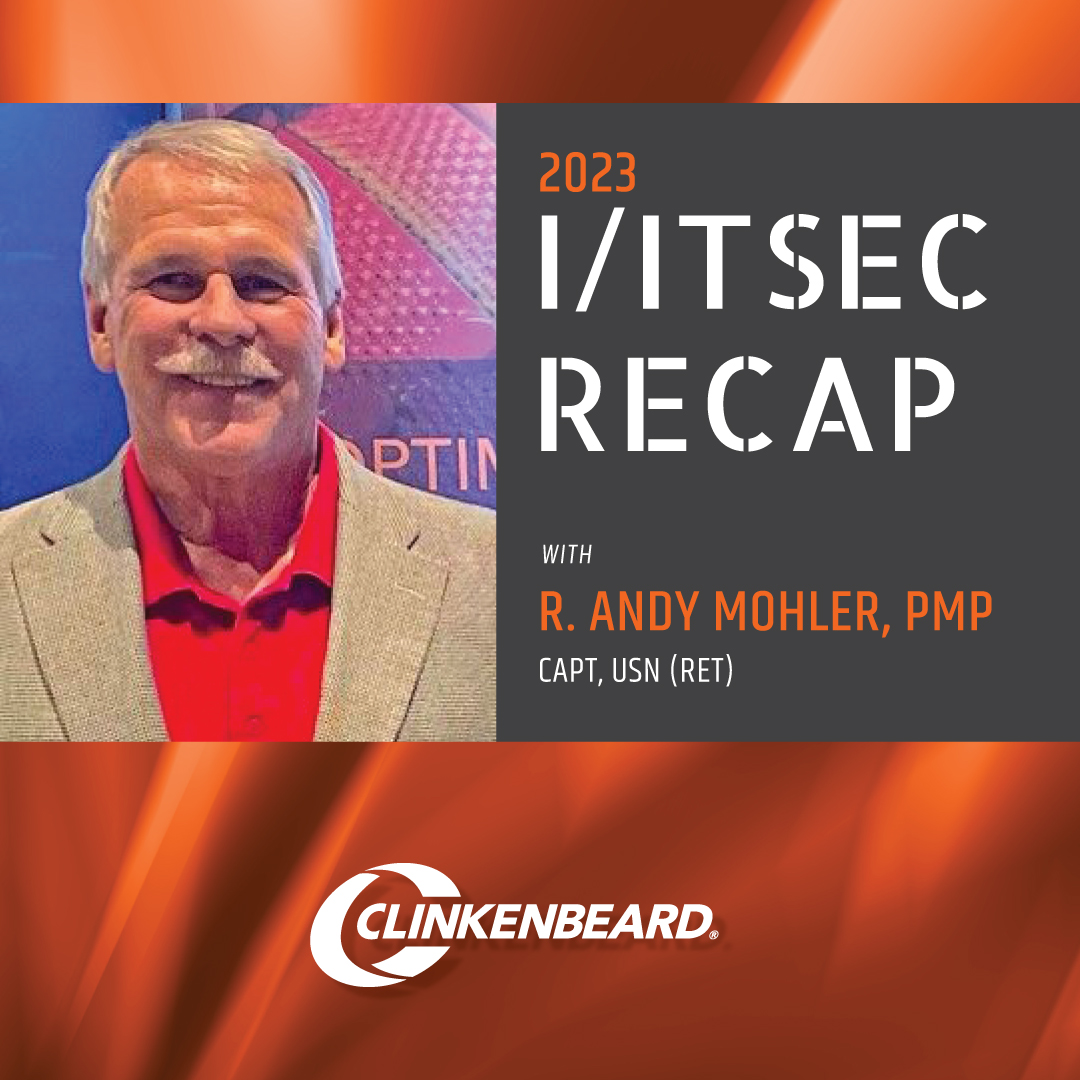I/ITSEC 2023

Andy Mohler, PMP, CAPT, USN (RET) recently attended the I/ITSEC on behalf of Clinkenbeard. This year marked his 23rd year of attendance.
Read more about his analysis below following this year’s show.
I like to think about and group MS&T market trends around three areas: Ideally these three areas line up, but usually they don’t. The gaps create challenges and opportunities.
1) Tech Changes; what’s new, changing, or being applied in a different fashion from the past. Tech includes actual hardware, software, analytics, algorithms driving machine learning and AI
2) Policy Changes; this includes Gov and B2B acquisition policies, formation of new Gov organizations or changes to their authority and responsibility, relationships (good or bad) between Gov organizations that affect our businesses.
3) Demand Signals; These signals can sometimes be expressed clearly from the resource and acquisition Commands, from our business partners, and from FMS/DCS. Or the signals may be only implied, conflicting, vague.. Demand signals can be years ahead of technology, or tech may exist in one market place (e.g. space business) and not in another yet (.e.g. DoD training).
Here are my top MS&T trends and some comments:
- Outcome-based training with proveable metrics. The demand is strong in both business and DoD. We need to help our clients form “what does success look like?” and “how do we measure success quickly with minimal human effort?” This drives a market for smart data collection & analytics.
- Artificial Intelligence. Definite demand signals and tech supporting AI. It seemed to be everywhere on the floor, advertised in market communiques and included in many of the panels and leadership discussions. The white space is around practical uses for AI that produce measurable outcomes that improve warfighter readiness. There is, rightfully, caution around how much trust to place in AI even as the demand is strong. Therefore being realistic about the risks and potential false paths of using AI on a project is critical.
- Growing recognition(or acknowledgement) of the important role of physical, hands-on training devices to build muscle memory and realism. Not everything can be done on a laptop or HMD, though these can be merged with physical devices to achieve an ideal learning experience. This is an example of “old becoming new again”, enabled by new tech such as modern CAD models, additive manufacturing, high tech robotic machining, reverse engineering, advanced instrumentation to provide realistic operation and failures for training.
- Continued blending of live-virtual-constructive (LVC). 20 years ago these were very separate domains that occasionally overlapped, but today they are mostly merged. Even if a company or gov entity is focused on only one of the three domains, understanding and promoting how that fits into the larger picture is useful. We can help our Gov partners gain funding and program stability in this way.
- Networking of systems in new ways that provide lower cost, persistence, scalability, flexibility for operations and training, easy connectivity, collection of performance metrics, with multiple levels of security. This brings challenges such as cyber compliance and ATO/ATC timelines.
- Digital Twins of everything from outer space to undersea, including humans. There is acceptance of the value of digital twinning, with the caveat that the levels of detail and realism need to be tailored to the outcome desired. More is not necessarily better, as costs and complexity rise.
